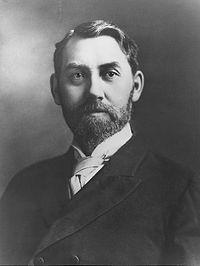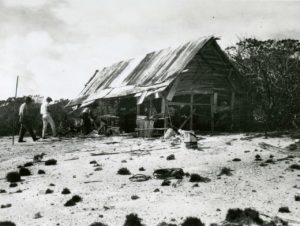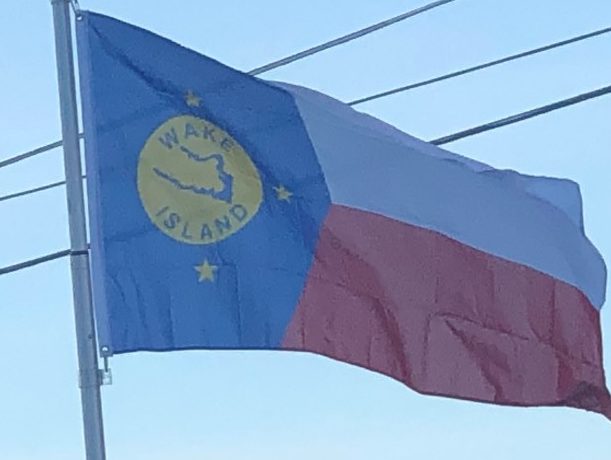After USAT Buford reached Manila, Captain Croskey reported on the presence of Japanese at Wake Island. He also learned that USAT Sheridan had a similar encounter at Wake with the Japanese. The incident was brought to the attention of Assistant Secretary of the Navy Charles Darling, who at once informed the State Department and suggested that an explanation from the Japanese Government was needed.

In August 1902 Japanese Minister Takahira Kogorō provided a diplomatic note stating that the Japanese Government had “no claim whatever to make on the sovereignty of the island, but that if any subjects are found on the island the Imperial Government expects that they should be properly protected as long as they are engaged in peaceful occupations.”
Wake Island was now clearly a territory of the United States, but during this period the island was only occasionally visited by passing American ships. One notable visit occurred in December 1906 when U.S. Army General John J. Pershing, later famous as the commander of the American Expeditionary Forces in western Europe during World War I, stopped at Wake on USAT Thomas and hoisted a 45-star U.S. flag that was improvised out of sail canvas.
Feather Poaching:
With limited fresh water resources, no harbor and no plans for development, Wake Island remained a remote uninhabited Pacific island in the early 20th century. It did, however, have a large seabird population that attracted Japanese feather poachers.

The global demand for feathers and plumage was driven by the millinery industry and popular European fashion designs for hats, while other demand came from pillow and bedspread manufacturers. Japanese poachers set up camps to harvest feathers on many remote islands in the Central Pacific. The feather trade was primarily focused on Laysan albatross, black-footed albatross, masked booby, lesser frigatebird, greater frigatebird, sooty tern and other species of tern. On February 6, 1904, Rear Admiral Robley D. Evans arrived at Wake Island on USS Adams and observed Japanese collecting feathers and catching sharks for their fins. Abandoned feather poaching camps were seen by the crew of the submarine tender USS Beaver in 1922 and USS Tanager in 1923. Although feather collecting and plumage exploitation had been outlawed in the territorial United States, there is no record of any enforcement actions at Wake Island.
Japanese Castaways:
In January 1908, the Japanese ship Toyoshima Maru, en route from Tateyama, Japan, to the South Pacific, encountered a heavy storm that disabled the ship and swept the captain and five of the crew overboard. The 36 remaining crew members managed to make landfall on Wake Island, where they endured five months of great hardship, disease and starvation. In May 1908, the Brazilian Navy training ship Benjamin Constant, while on a voyage around the world, passed by the island and spotted a tattered red distress flag. Unable to land a boat, the crew executed a challenging three-day rescue operation using rope and cable in order to bring on board the 20 survivors and transport them to Yokohama.
USS Beaver Strategic Survey:
In his 1921 book Sea-Power in the Pacific: A Study of the American-Japanese Naval Problem, Hector C. Bywater recommended establishing a well-defended fueling station at Wake Island in order to provide coal and oil for United States Navy ships engaged in future operations against Japan. On June 19, 1922, the submarine tender USS Beaver landed an investigating party to determine the practicality and feasibility of establishing a naval fueling station on Wake Island.
